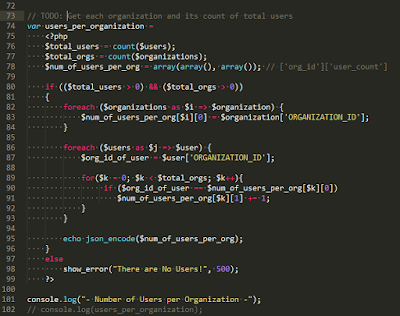I'm learning and working on D3 stuff and I see many examples using the letter d. This d stands for data, obviously. BUT, almost everything in the world is a d (i.e. data). Needless to say, I had to update code to ensure better understanding and programming. Here's my example of better coding using D3.
Before
groups.selectAll('text')
.data(function (d) {
console.log(d);
return d;
})
.enter()
.append('text')
.text( function (d, i) {
console.log(i);
if (typeof d === 'number')
{
console.log("data type is a number, not object...skipping.");
return;
}
console.log(d);
return d.x;
});
.data(function (d) {
console.log(d);
return d;
})
.enter()
.append('text')
.text( function (d, i) {
console.log(i);
if (typeof d === 'number')
{
console.log("data type is a number, not object...skipping.");
return;
}
console.log(d);
return d.x;
});
After
groups.selectAll('text')
.data(function (arr) {
console.log(arr);
return arr;
})
.enter()
.append('text')
.text( function (obj, i) {
console.log(i);
if (typeof obj === 'number')
{
console.log("data type is a number, not object...skipping.");
return;
}
console.log(obj);
return obj.x;
});
.data(function (arr) {
console.log(arr);
return arr;
})
.enter()
.append('text')
.text( function (obj, i) {
console.log(i);
if (typeof obj === 'number')
{
console.log("data type is a number, not object...skipping.");
return;
}
console.log(obj);
return obj.x;
});
In the After, I updated the d within the data method into "arr" as its a data array representing the dataset passed in. I updated the d within the text method into "obj" as its a data object of the data array passed in.
I hope this helps somebody.
I hope this helps somebody.
Blessings,




